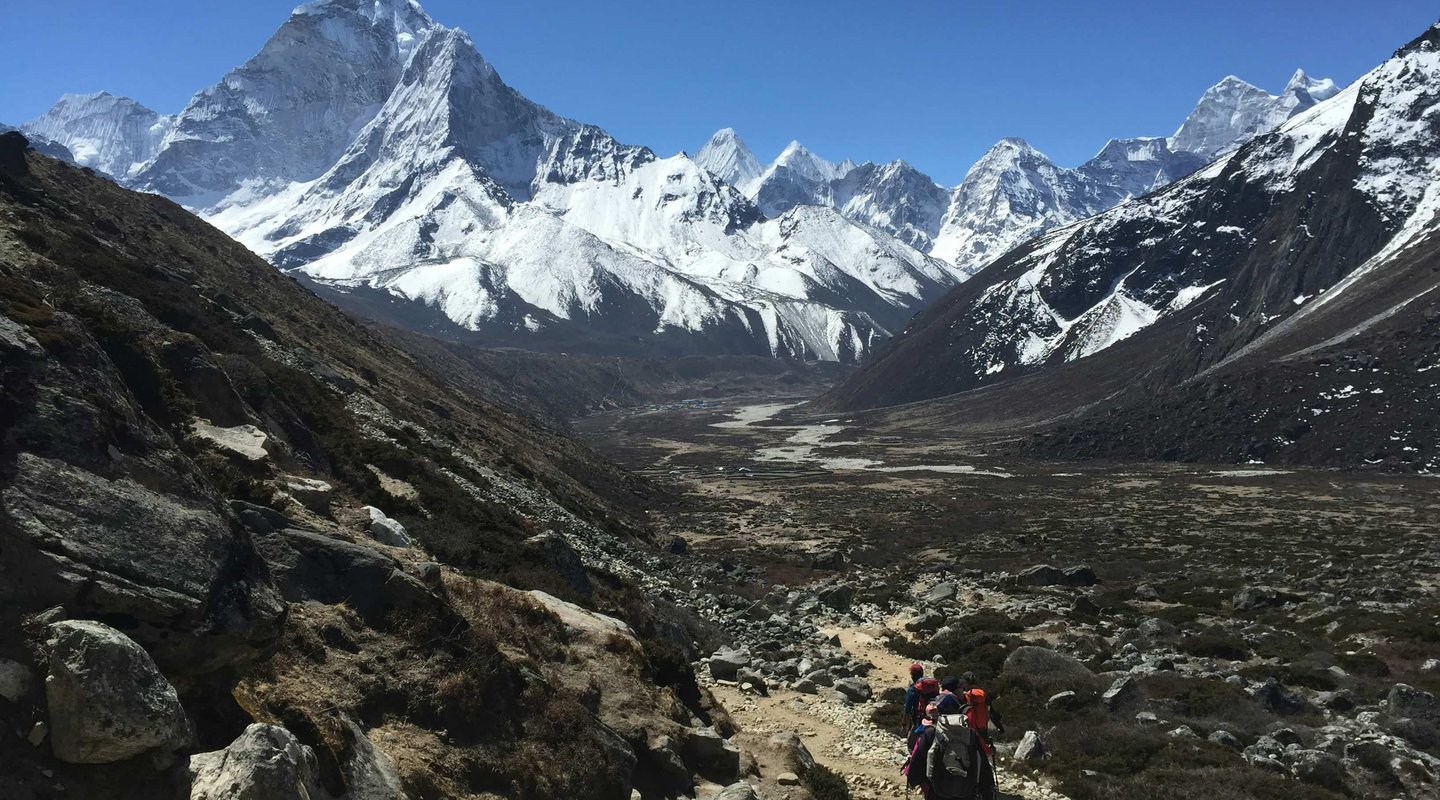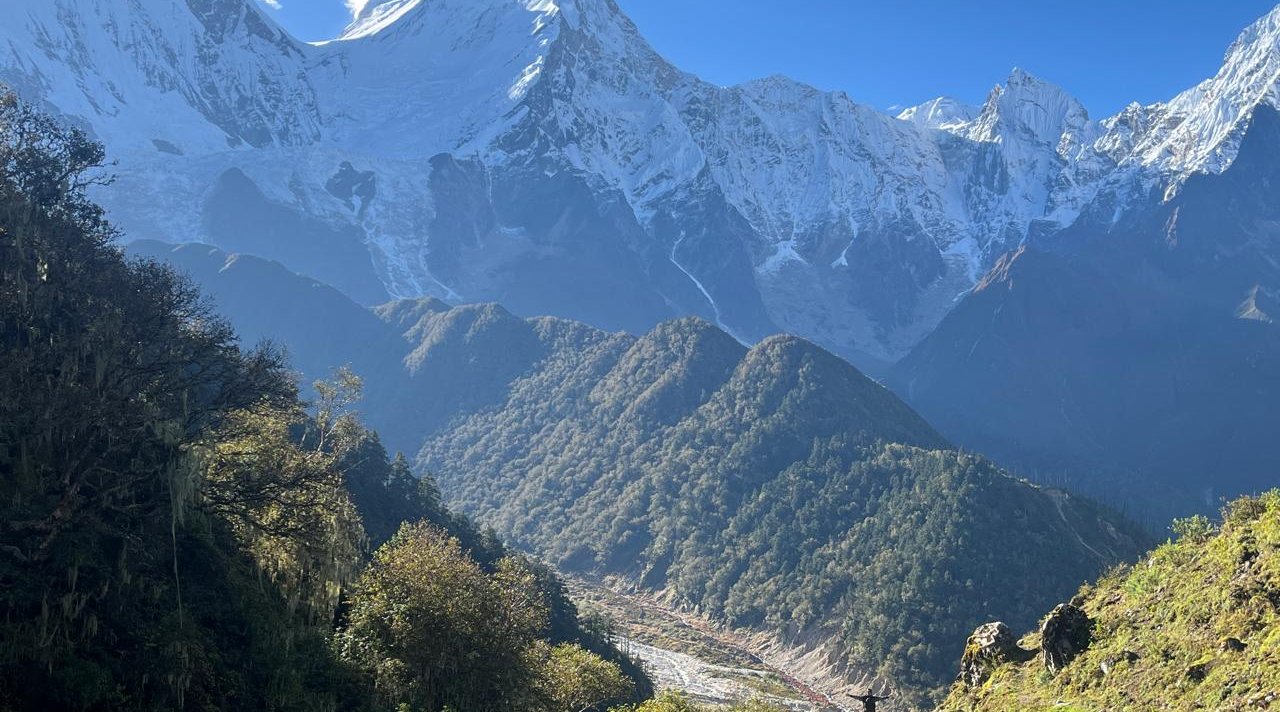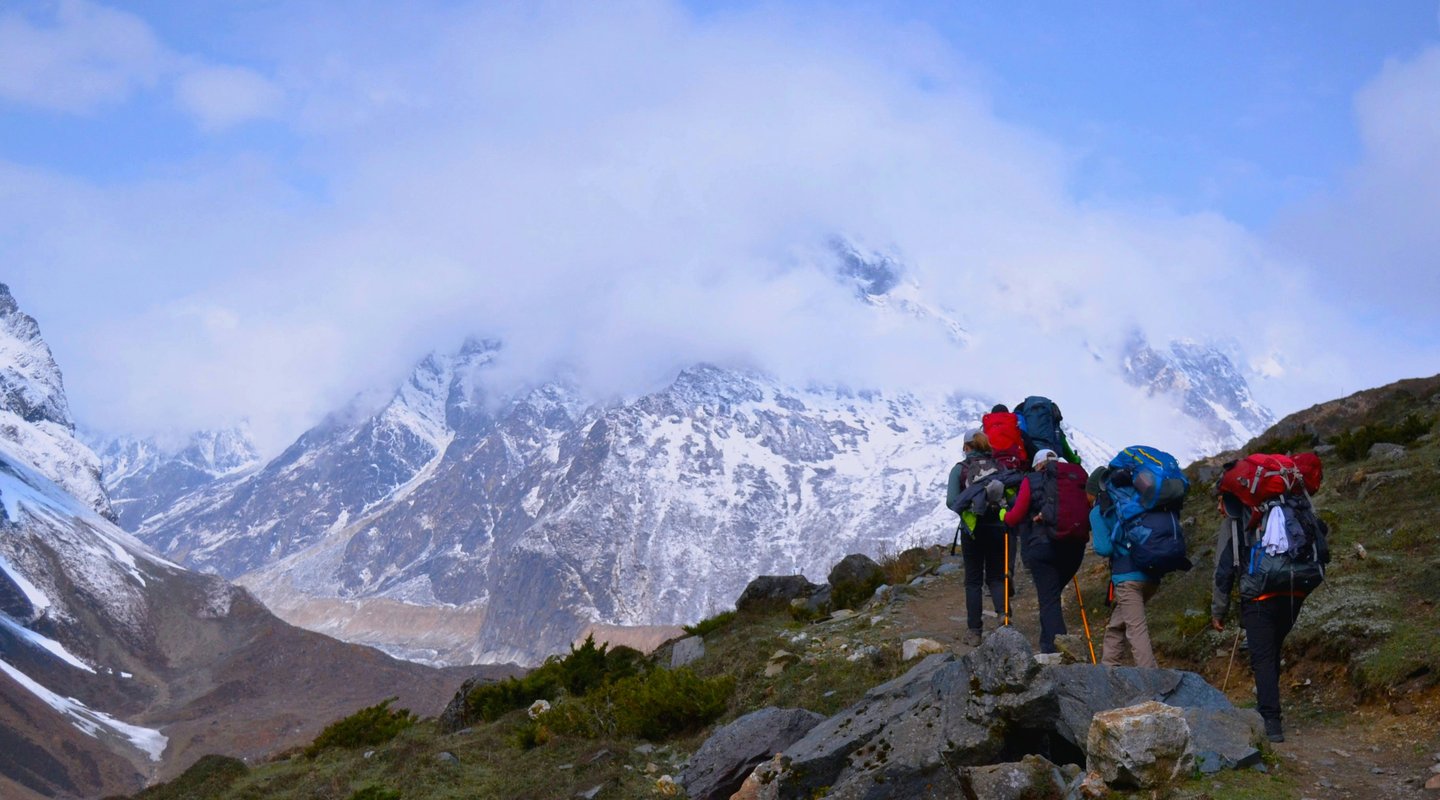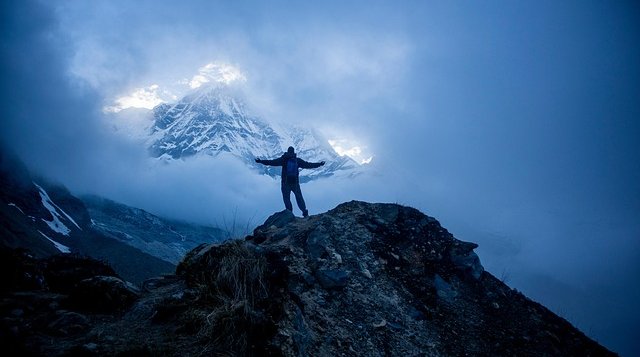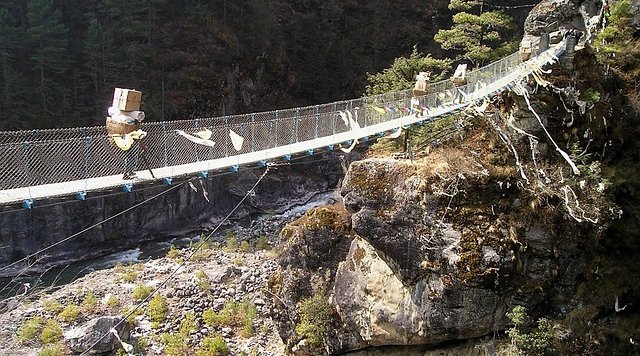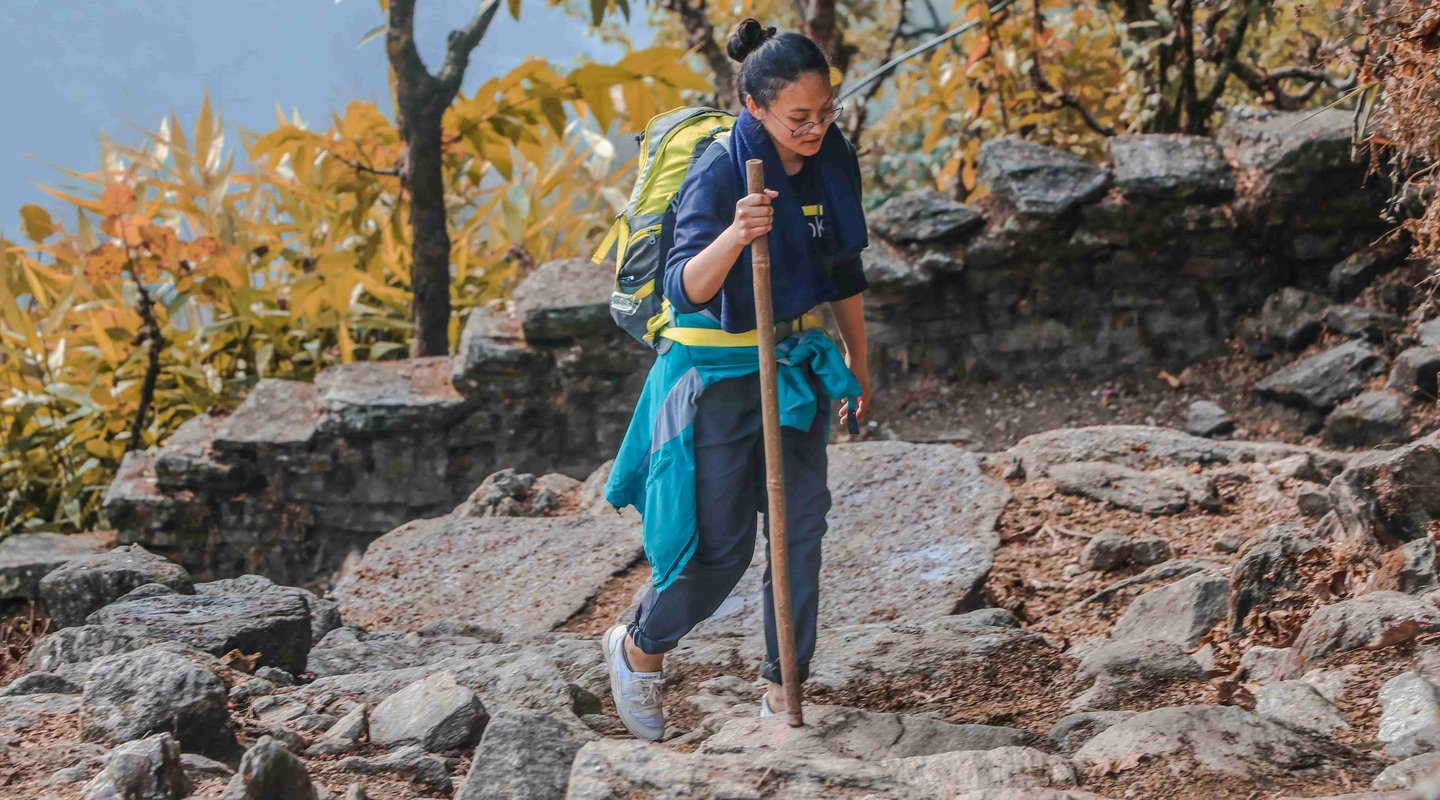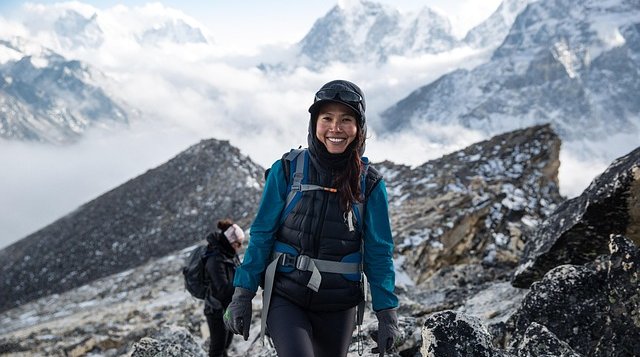Standing in a Kathmandu hotel room, surrounded by gear spread across every surface, you're about to make critical decisions that will impact every moment of your upcoming adventure. The Everest Three Pass Trek packing list you create now determines whether you'll comfortably conquer Kongma La, Cho La, and Renjo La—or struggle with inadequate equipment at 5,500 metres.
This comprehensive guide breaks down exactly what to pack for the high passes, balancing Lukla's strict 15kg weight limit with essential gear for temperatures plummeting to -20°C. Whether you're wondering about microspikes for Cho La's glacier or the best sleeping bag rating for Everest trek conditions, you'll find practical answers based on real experience.
Why This Packing List Matters
Your three-pass trek gear list directly impacts safety, comfort, and success rates on this demanding route. Forget one critical item, and you might face dangerous situations above 5,000 metres where shops don't exist.
The Lukla flight enforces strict weight limits—15kg for checked baggage plus 5kg hand carry. Every gram counts when balancing Nepal trekking essentials against porter loads and personal comfort.
Critical Packing Considerations:
- Weather extremes from +20°C to -20°C
- Three technical passes requiring specific gear
- Limited resupply options above Namche
- Altitude affecting gear performance
- Tea house amenities varying dramatically
- Emergency evacuation scenarios
Clothing & Layering Essentials
Mastering altitude clothing layering proves crucial when temperatures swing 30 degrees between sunny afternoons and pre-dawn pass crossings. Your clothing system must handle everything from sweating uphill to freezing winds at 5,500 metres.
Base Layer Foundation
Start with quality merino wool or synthetic base layers that manage moisture effectively. Pack two sets minimum—one for wearing, one for washing/drying rotation.
Essential Base Layers:
- 2x long-sleeve thermal tops (merino/synthetic)
- 2x thermal bottoms for sleeping/cold days
- 3-4 pairs merino wool socks Nepal tested
- Sports bras for women gear three passes (3x recommended)
- Quick-dry underwear for high altitude (4-5 pairs)
Insulation & Outer Layers
The mid-layer provides crucial warmth while your rain shell three passes handles wind and precipitation. Men layering Nepal typically requires one fleece and one puffy jacket.
Core Insulation Pieces:
- Fleece jacket (200-300 weight)
- Down jacket (600+ fill power)
- Waterproof/breathable jacket
- Waterproof pants (side zips helpful)
- Soft-shell pants for daily trekking
- Insulated gloves cold trek rated -15°C
Additional Clothing Items
Small items make huge comfort differences during long trekking days. Don't underestimate their importance when deciding how many socks for three passes you'll need.
Comfort Essentials:
- Sun hat with neck protection
- Warm beanie (fleece-lined)
- Buff or neck gaiter (2x)
- Liner gloves plus insulated pair
- Gaiters for snow/mud
- What underwear for high altitude: synthetic preferred
Footwear for the High Passes
Choosing hiking boots for three passes requires balancing support, warmth, and traction. Your feet carry you across glaciers, rocky scrambles, and icy slopes—invest accordingly.
Primary Trekking Boots
The best hiking shoes for high passes combine ankle support with aggressive tread patterns. Break them in thoroughly before departure to prevent blisters.
Boot Selection Criteria:
- High ankle support essential
- Waterproof membrane (Gore-Tex)
- Vibram sole or equivalent
- Compatible with microspikes
- Room for thick socks
- Weight under 800g per boot
Traction Devices
The micro spikes Cho La question comes up constantly—yes, they're essential! Understanding microspikes vs crampons helps you choose correctly.
Traction Equipment:
- Microspikes: Mandatory for all three passes
- Trekking poles: Collapsible, with snow baskets
- Camp shoes: Lightweight for tea houses
- Extra laces: Emergency backup
- Sock liners: Blister prevention
Technical Gear Recommendations
Your sleeping bag Everest trek choice impacts every night's rest and recovery. Understanding what sleeping bag rating for Everest conditions ensures comfortable sleep.
Sleep System Essentials
Temperatures drop to -20°C at high camps, making proper insulation non-negotiable. Most tea houses provide blankets, but quality varies dramatically.
Sleep Gear Requirements:
- Sleeping bag: -15°C to -20°C rating
- Silk liner: Adds 5°C warmth, hygiene
- Inflatable pillow: Comfort worth 100g
- Earplugs: Essential for thin walls
Hydration & Water Management
The water filter SteriPen debate continues, but purification remains essential. Choose the best water bottle for trek based on durability and temperature resistance.
Water System:
- 2x wide-mouth bottles (Nalgene preferred)
- Water purification: Tablets or SteriPen
- Electrolyte powder packets (20+)
- Insulated sleeve for one bottle
- Camelback optional but freezes easily
Essential Trekking Equipment
Quality trekking poles Cho La crossing become invaluable, especially during steep descents. Consider what to bring for Renjo La specifically—wind protection proves crucial.
Must-Have Gear:
- Trekking poles: Shock-absorbing
- Headlamp high altitude (2x recommended)
- Backpack: 40-50L capacity
- Daypack: 20L for side trips
- Dry bags: Organization/waterproofing
Personal Items & Hygiene Must-Haves
Managing hygiene items for teahouse trek requires creativity and preparation. The wet wipes teahouse combination becomes your daily reality above 4,000 metres.
Toiletries & Hygiene
Limited washing facilities make hygiene biodegradable soap essential for environmental protection. Pack what towel for trek—quick-dry microfiber works best.
Hygiene Essentials:
- Wet wipes: 2 packs minimum
- Biodegradable soap: All-purpose
- Quick-dry towel: Medium size
- Toothbrush/paste: Travel size
- Hand sanitizer: Multiple small bottles
- Toilet paper: 2 rolls (available locally)
- Laundry detergent sachet: 5-6 packets
Comfort Items
Small luxuries improve morale during challenging days. Understanding teahouse amenities packing helps avoid overpacking unnecessary items.
Comfort Additions:
- Earplugs lodge walls: Essential for sleep
- Eye mask: Early morning starts
- Lip balm: Multiple tubes
- Moisturizer: High SPF
- Nail clippers: Surprising necessity
- Mirror: Small, unbreakable
Health & Altitude Management Kit
Your altitude sickness meds packing strategy could save your trek—or your life. Building a comprehensive first aid kit Everest adapted proves essential.
Altitude Medications
Understanding health kit altitude sickness components helps prevent and manage AMS symptoms. Consult your doctor about Diamox before departure.
Altitude Management:
- Diamox: 125mg twice daily (prescription)
- Ibuprofen: Pain and inflammation
- Paracetamol: Headache relief
- Aspirin: Emergency altitude aid
- Dexamethasone: Severe AMS (prescription)
- Thermometer: Monitor fever
First Aid Essentials
The first aid blister plasters become invaluable after day three. Pack sunscreen lip balm altitude protection with SPF 50+ minimum.
Medical Supplies:
- Blister treatment: Compeed, moleskin
- Bandages: Various sizes
- Antiseptic wipes/cream
- Diarrhea medication: Imodium
- Rehydration salts: 10+ packets
- Antibiotics: Broad spectrum (prescription)
- Throat lozenges: Dry air relief
- Insurance high altitude: Documentation
Nutrition & Energy
Planning energy bars snacks trek ensures consistent fuel during long days. Local options exist but variety motivates.
Trail Nutrition:
- Energy bars: 2 per day minimum
- Electrolyte powder: Daily use
- Multivitamins: Altitude depletes
- Protein powder: Optional recovery
- Favorite snacks: Morale boosters
Packing Tips & Weight Optimization Strategies
Managing Lukla flight weight limit requires strategic packing for solo three passes or group treks. Understanding how to pack light for passes without sacrificing safety takes practice.
Weight Distribution Strategy
The packing tips Lukla flight include wearing heavy items during check-in. Learning how to pack for three passes trek efficiently saves porter costs.
Weight Management Tips:
- Wear boots and jacket at check-in
- Distribute weight between bags
- Use compression sacks
- Share group items (first aid, etc.)
- Buy snacks in Namche
- Mail unnecessary items home
Backpack Selection
Knowing how to choose backpack size depends on porter usage and personal fitness. Your checklist three passes weight should stay under 10kg for comfortable trekking.
Pack Organization:
- Main pack: 40-50L for porters
- Daypack: 20-25L for daily use
- Rain cover: Backpack rain cover essential
- Dry bags: Categorize gear
- Stuff sacks: Compress clothing
- Weight optimized packing: Every gram matters
Electronics & Documentation Essentials
Your electronics list Nepal high altitude must balance documentation needs with weight limits. Understanding electronics cold weather tips prevents battery failure.
Power & Lighting
The best headlamp for trek combines brightness with battery efficiency. Carry power bank for trek charging capabilities for multiple devices.
Electronic Essentials:
- Headlamp: 200+ lumens, extra batteries
- Backup flashlight: Small LED
- Power bank: 20,000mAh minimum
- Solar charger: Optional backup
- Adapter: Travel charger multi plug
- Cables: Lightning/USB-C/micro
Documentation & Entertainment
Keep visa documents in packing organized and accessible. Bring passport photos permits ready—you'll need four copies minimum.
Important Papers:
- Passport: 6+ months validity
- Permits: Copies in plastic sleeve
- Insurance documents: Emergency numbers
- Cash: USD and NPR mixed
- Credit cards: Backup payment
- Best e-reader for trek: Loaded with books
Photography Equipment
Building your photographer kit three passes requires balancing quality with weight. Protect gear from altitude and temperature extremes.
Photo Gear:
- Camera: Weather-sealed preferred
- Lenses: Wide-angle essential
- Batteries: 4x minimum
- Memory cards: Multiple backups
- Cleaning kit: Dust prevalent
Seasonal Packing Variations & Checklists
Understanding seasonal packing monsoon trek versus best season packing April helps optimize your gear list. Each season demands specific adjustments.
Spring Season Adjustments
March through May brings warmer days but cold mornings. Your seasonal rain gear Nepal might see afternoon use.
Spring Additions:
- Lighter sleeping bag acceptable
- Rain protection increases
- Sun protection critical
- Fewer warm layers needed
- Crampons possibly required (March)
Autumn & Winter Considerations
Packing for -15C Gorak Shep becomes reality October through February. Winter demands expedition-level preparation.
Cold Season Extras:
- Sleeping bag: -20°C minimum
- Down pants: Evening warmth
- Balaclava: Face protection
- Hand warmers: Chemical packets
- Thermos: Hot drinks crucial
Frequently Asked Questions (FAQs)
Do I need a sleeping bag for Three Passes Trek?
Yes, a quality sleeping bag rated -15°C to -20°C is essential. Tea houses provide blankets but they're often inadequate and questionable hygiene makes personal bags preferable.
What hiking boots for high passes work best?
Choose waterproof, high-ankle boots with aggressive tread. Brands like Salomon, La Sportiva, or Scarpa offer excellent options compatible with microspikes.
Should I bring microspikes or crampons?
Microspikes suffice for all three passes in normal conditions. Full crampons are only needed for winter treks or unusual ice conditions.
How much does gear weigh for the trek?
Aim for 8-10kg in your daypack, with porters carrying another 10-12kg. Total gear weight typically ranges 18-22kg including everything.
Can I buy forgotten items in Namche?
Namche offers basic gear at inflated prices. Don't rely on finding specific items—especially quality equipment or medications.
What's the best water purification method?
SteriPen offers convenience while purification tablets provide backup. Many trekkers use both for redundancy at altitude.
How many battery packs do I need?
One 20,000mAh power bank suffices with solar backup. Cold reduces capacity by 30-40%, so keep batteries warm.
Should women pack differently?
Women gear three passes includes extra sports bras, feminine hygiene products, and potentially different layering for temperature regulation.
Conclusion
Your Everest Three Pass Trek packing list directly determines comfort, safety, and success across Kongma La, Cho La, and Renjo La. Focus on quality over quantity, prioritizing versatile items that serve multiple purposes while respecting weight limitations.
Ready to conquer the three passes? Download our free printable packing checklist PDF and start preparing for your Himalayan adventure today. Book your trek with confidence, knowing you're properly equipped for whatever the mountains present.
Take Action Today:

